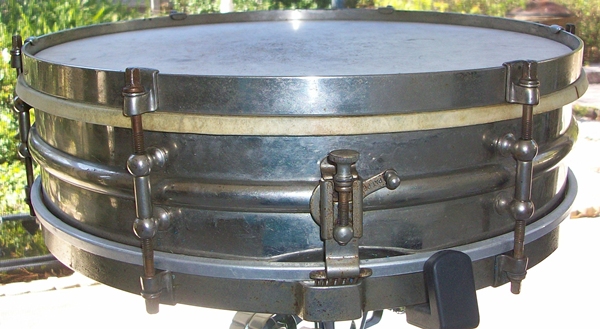One, which both impressed my friend in sound quality and age, is my Ludwig & Ludwig Nickel Over Brass circa 1920s model. This snare drum is configured with calf heads and original gut snares. Since the practice session was low volume and I used brushes as often as sticks, the sound I was able to get from that old snare drum was spot on for what we were doing. I don't record, but my friend is something of a recording and studio wizard and he thought the sound was perfect.
I have to admit, I had full control over the dynamic range needed for what we were playing, and often that is difficult with a 4x14 inch snare drum because the shallow ones tend towards the loud side. Of course, the calf heads provided a little attenuation, but it was the shell construction - thin wall with the two pieces fitting together at the bead - that was a contributing factor too. For more about that see Anatomy of a Two Piece Shell. And the gut snares added the right amount of dryness that made things perfect. Here are a few pictures of the snare drum I used:


Note the gut snares and the moleskin patches on the old heads
While it is expensive tracking down 90-100 year old snare drums, many modern ones come with cable snares; a good example is the Pearl Symphonic Snare Drum with, say, a Remo Skyntone batter head. That could get you in the ball park of the sound I am describing. Granted, this configuration may not sound that great on stage in a large venue, but in a small recording studio it would give the engineer a more controlled sound, and in a small, intimate venue where low volume playing is required I can assure you that it works.
Gut and cable configurations are two that I will be experimenting with in the near future, and I will definitely be outfitting a few of my snare drums with newer calf heads. As I progress and verify what works I'll post the results here.
No comments:
Post a Comment